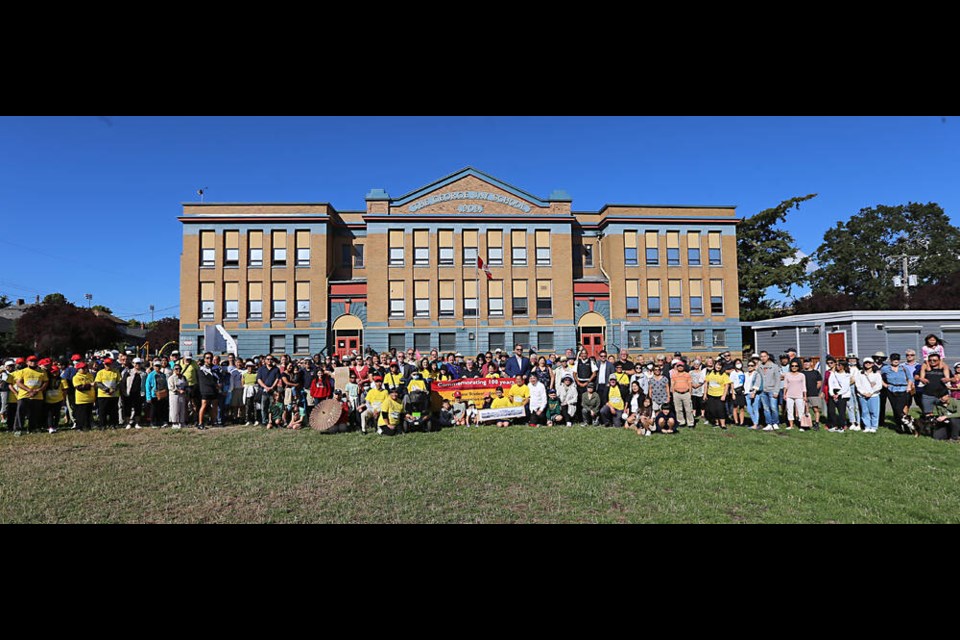In 1954, Derek Chow’s Quadra Elementary School teacher pulled him aside and asked him to stop speaking Cantonese — the only language he knew.
He was held back a year until he was fluent in English, but that didn’t stop him from becoming one of the first Chinese-Canadian police officers in B.C. and a nine-year chair of the Saanich School Board.
Chow was one of nearly 600 people who marked a historic stand against racism and segregation in Victoria by walking Monday from George Jay Elementary to Kings Road — the same route roughly 200 Chinese students were forced to take when they were removed from classes and sent to a segregated Chinese-only school exactly one century ago.
“We’re recognizing the students of 1922 that did the march and made sacrifices to make sure that there was no future discrimination,” Chow said, adding that despite the strides made since, today’s racism is simply less conspicuous.
“There is discrimination hidden,” he said. “And I think what we have to do is stand up against it. I think the community as a whole is enriched when we all come together and value each other’s diversity.”
In 1922, the Victoria School Board expanded segregation of Chinese-Canadian students through to the end of Grade 7 — extending a policy implemented in 1908 by board chairman George Jay that segregated Grades 1 through 4.
On Sept. 5 of that year, students were removed from public school classes and marched to a Chinese-only school on Kings Road. However, shortly after arriving, the students left in an act of protest. They would have mostly been between the ages of nine and 12 years old.
The strike lasted a whole year, and set the stage for further push back from the Chinese community on racist policies created by people no less alien to the region than other non-Indigenous immigrants.
Alan Lowe, chairman of the Victoria Chinatown Museum Society and Victoria’s first mayor of Chinese heritage, said the event was an opportunity
“It took courage. They were very bold because at that time, the Chinese had no status here in Canada, in Victoria,” said Lowe.
The strike came to an end in August 1923, the same year the Chinese Immigration Act — also known as the Chinese Exclusion Act — was passed, restricting virtually all Chinese immigration into the country.
Though partial segregation would continue in Victoria for Chinese students in Grade 4 and below, the Chinese Student Strike had won a large part of a difficult battle. Still, the fight against anti-Asian racism would continue.
Lowe said it was overwhelming to see the support on the morning of the march.
“We organized this in a short time frame and to see the entire community — not just the Chinese community but the greater community — come out to support us is just overwhelming.”
Following the march, the Greater Victoria School District issued an apology to the Chinese community.
“We can and we must acknowledge that hateful policy and we must seek amends,” said school board chair Ryan Painter. “That’s why we’re here today.”
Thomas Chan, president of the Chinese Consolidated Benevolent Association, accepted an apology plaque from the school district.
“It’s hard to imagine the pain and anguish those students and their families felt and endured 100 years ago for an entire year,” Chow said. “We know the student strike was not about education, it was about segregation. Something we should not, and do not accept.”



